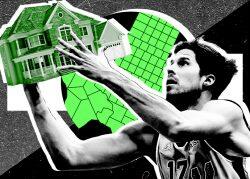The line between Austin and San Antonio continues to blur.
The two metros are connected by Texas Hill Country where rural land developments are as popular as ever. Along this 50-miles stretch of Route 35, submarkets like New Braunfels, San Marcos, Kyle and Buda have turned into developer darlings. Home buyers priced out of Austin have even started to see the two metros as interchangeable.
The latest entity caught in the middle of this rivalry is the San Antonio Spurs. The NBA franchise has been flirting heavily with the Texas Capital. The affair has already cost San Antonio two regular season home games in April that will now be played in Austin’s new Moody Center.
Here’s the dilemma, as the San Antonio Business Journal puts it: While the courtship of the Capital City could win the Spurs more business outside of San Antonio, it could cost the organization supporters here at home— if the relationship becomes too cozy.
“Without us working on this, really putting our nose to the grindstone from a regional standpoint, we will be left in the dust,” Spurs Senior Vice President Frank Miceli said. “We sit in the fastest-growing region in North America. We’re so uniquely positioned to cultivate this megaregion from Monterrey to Austin.”
Read more


The Bexar County commissioners were split 3-2 when granting the team’s preliminary approval to move some games out of San Antonio in May. Bexar County Judge Nelson Wolff warned that there was a “divided opinion in this community as to the intention of the Spurs.”
Unlike Houston and Dallas, Austin and San Antonio are scant on major league franchises. San Antonio has the Spurs and Austin’s only big stadium draw is the Texas Longhorns. Understandably, neither want to share their city’s identities.
Eight years removed from its last NBA championship and coming off of three consecutive losing seasons, the Spurs are already on thin ice. One could argue that it’s a terrible time for the teams leadership to test fans’ loyalty.
“We’re just trying to grow our own region,” Miceli says, pointing out how the Boston Celtics built a regional support base in multiple states but remains firmly planted in Boston.
— Maddy Sperling
